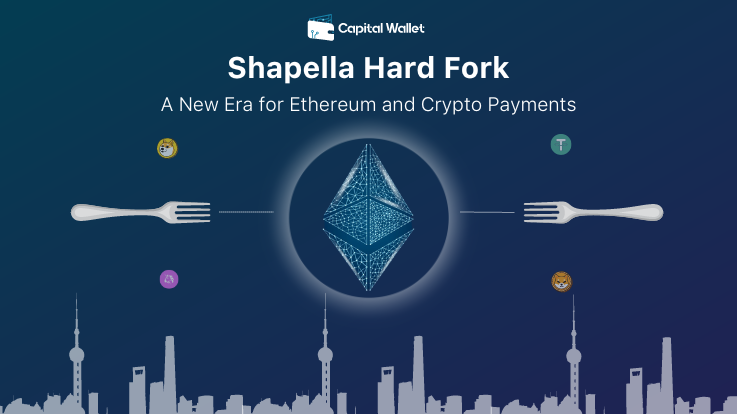
The Shapella hard fork made recent improvements to Ethereum’s consensus and execution layers possible, combining the Shanghai and Capella enhancements. In a long-awaited development following The Merge, this major milestone finally allows validators and users to unstake their Ether from the network. This exploration delves into the effects of the Shapella hard fork on the Ethereum community, including the growing trend of accepting crypto payments.
The Shapella Upgrade: Key Features
The most important aspect of the Shapella upgrade is Ethereum Improvement Proposal (EIP) 4895, which facilitates validator withdrawals from the network. Additionally, developers have added additional specifications to Shapella in order to optimize transaction fees for particular activities, making cryptocurrency payments more attractive.
The Shapella upgrade introduces two categories of withdrawals: partial and complete. Full withdrawals allow validators to exit their stake on the Beacon Chain entirely, taking their entire ETH balance, including their initial 32 ETH and any accrued rewards and penalties. Partial withdrawals allow validators to access their balance exceeding the 32 ETH required to establish a validator node, whereas partial withdrawals allow validators to access their balance exceeding the 32 ETH required to establish a validator node.
To ensure Ethereum’s stability and a steady withdrawal process, a cap limits the number of validators who can withdraw each day. Through full withdrawals, we can withdraw approximately 57,600 ETH ($109 million) per day, in addition to partial withdrawals.
Impact of Shapella on Ethereum Ecosystem
The Shapella hard fork impacts the Ethereum ecosystem in a number of ways, giving users greater freedom to allocate previously restricted assets. Accessing these funds may cause short-term price fluctuations, but many users who staked their Ether at higher prices may be unwilling to sell at a loss.
In the first week after the Shapella hard fork, we witnessed the release of only ≈ 170,000 Ether of the total 18,100,000 ETH staked on the Beacon Chain. This amount consisted of 100,000 Ether ($190 million) in staking rewards and 70,000 Ether ($133 million) in staked Ether.
Since the Shapella hard fork occurred and to this day, 2,426,178 withdrawals have unleashed a total of 2,124,484 Ether. Approximately 89 percent of validators (496,191 out of 556,988 total active validators) can currently request a full or partial discharge of their Ether.
Despite the implementation of the Shapella hard fork, which has released over $29 billion worth of Ether on the Beacon Chain, the price of Ether has remained essentially unaltered after the upgrade. This stability may encourage more entities to consider accepting crypto, especially Ether, as a viable form of payment.
The Shapella hard fork represents an important milestone for Ethereum’s proof-of-stake system and is the most significant upgrade since September’s The Merge. The Ethereum Investment proposal EIP-4895 implementation transferred staked Ether from the Beacon Chain to the Ethereum Virtual Machine, enabling withdrawals.
This upgrade gives users greater latitude in allocating their previously locked assets and may have diverse effects on the Ethereum ecosystem. Ethereum remains at the vanguard of innovation in the blockchain and cryptocurrency space as the network continues to evolve.
For more information about Capital Wallet, please visit us at: https://capitalwallet.com/

